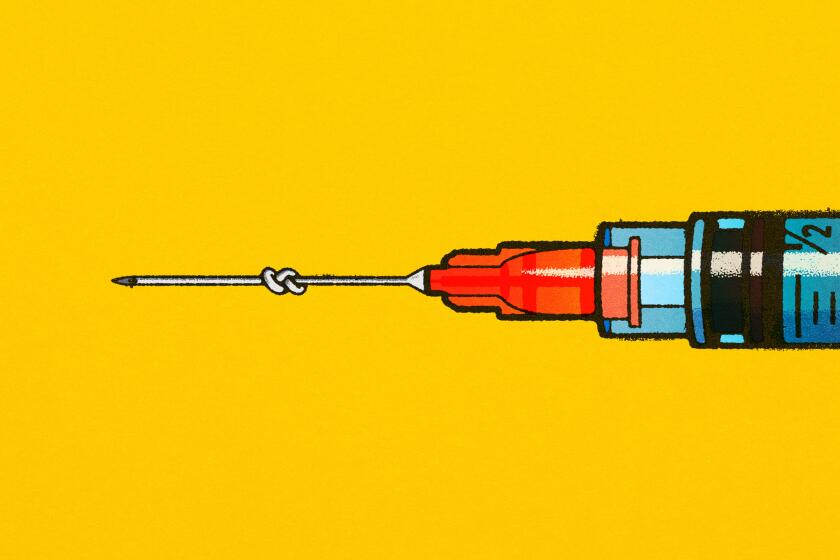Discover this: Columbus Day isn’t about Columbus
THESE DAYS, a good word about Christopher Columbus is about as rare as an insult was 100 years ago.
For one thing, there’s the ongoing question of whether a man can really “discover” a continent that is already inhabited. There’s the much-repeated charge that he was only in it for the riches; that he was an imperialist, even that he was the founder of the Atlantic slave trade.
In the 1990s, the city of Berkeley actually gave up celebrating Columbus Day altogether and renamed it “Indigenous People’s Day.”
But whichever way you come down on the Columbus debate, here’s the good news: Columbus Day in the United States is not really about Columbus anyway. Nor is it about 1492; in fact, it’s about 1892, the year President Benjamin Harrison issued the proclamation establishing a day to honor the “400th anniversary of the discovery of America.”
Before that, Columbus wasn’t at the forefront of our national mythology. One hundred years earlier, the tercentenary of his landing in the New World had been barely noticed -- except in smallish gatherings.
But, by the end of the 19th century, the United States was getting a makeover. Unprecedented immigration had transformed the country’s look overnight; in the 30 years between 1880 and 1910, 18 million newcomers came to this country.
And the immigrants who flooded America’s shores were of a different breed -- European, to be sure, but a different kind of European; what in those days were called “Slavs,” “Alpines,” “Hebrews,” “Iberics” or “Mediterranean.” They were swarthy, spoke strange languages and worshipped God differently from the Protestant majority.
At the beginning of the 1880s there were about 300,000 Italians in the U.S.; 10 years later, that number had doubled. And by 1910 there were 2 million Italians in the U.S., more than 10% of the nation’s foreign-born population.
The Italians -- along with Poles and Portuguese among others -- joined a swelling Irish (“Celtic”) community to form a new political bloc: the urban Catholic. Willing to take jobs that white Protestants refused, these urban Catholics met prejudice and suspicion. They constituted a “Catholic menace” -- a religious Fifth Column marching to papist orders.
Catholics badly needed a hero. And what better symbol to mobilize and Americanize these immigrants than one of their own? Columbus -- discoverer of the New World but born in the Italian port city of Genoa -- was a logical choice. As an editorial in the 1878 Connecticut Catholic put it, no one was more deserving “of grateful remembrance than the great and noble man -- the pious, zealous, faithful Catholic ... Christopher Columbus.”
Anti-Catholic sentiment fueled the establishment of fraternal self-help organizations. On March 29, 1882, Father Michael J. McGivney, the curate at New Haven’s St. Mary’s, set into place the cornerstone for what became the best known of these groups: the Knights of Columbus.
By the time Harrison’s “Discovery Day” came along, it sanctioned the many celebrations already in place. San Francisco’s Italians had celebrated their first Discovery Day in 1869, and in 1876, Philadelphia’s Italians erected a statue of Columbus in that city’s Fairmount Park. Well before the 1892 proclamation, the celebration was already on the calendar in St. Louis, Boston, Cincinnati and New Orleans.
I recently interviewed a 16-year-old Advanced Placement history student. I showed him Harrison’s proclamation and asked what he thought. “Columbus was a rat,” he told me. A rat whose motive was to “just get rich.” Later, when I presented these comments to a group of student teachers, they gushed at the student’s “critical thinking” and his willingness to stare down a presidential proclamation and question Columbus’ motives.
But I much preferred the response I got from a 29-year-old graduate student who immediately noted that the proclamation had been handed down at the beginning of the Progressive era, at a time of intense immigration.
Because that’s what it was about: a changing nation and how we use and reinvent the past to address our present needs.
In history, only questions -- never conventional wisdom or slogans -- pry open the door to critical thinking.



